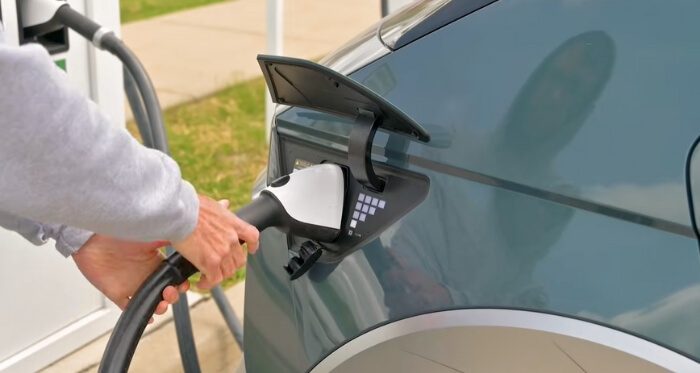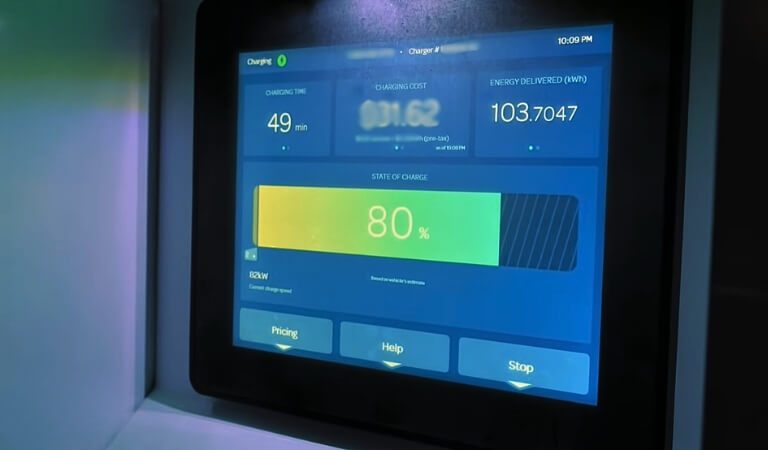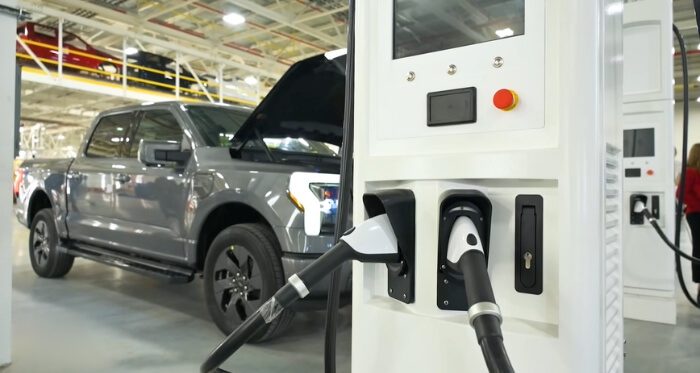The reliance on charging systems has increased and become a part and parcel of our daily lives. From charging smartphones to laptops all have different functionalities in our daily habits The concept is also the same for electric vehicles. As EVs have surged in popularity, and at the heart of every EV is its battery.
Besides, an EV has various charging processes based on the charging need. This is when a general question occurs: Should I charge my EV to 80 or 90?
Yes, you can charge your battery to 80, as it is the minimum recommended for all types of EVs. But charging to 90% is only applicable for Tesla EVS because these are designed for this maximum charging state, and charging this 10% extra won’t affect the battery.
However, every user should maintain a standard charging state and some practices to extend the battery’s longevity. Besides, charging your EV through CrackPlatoon, especially if you are in Bangladesh, will help you get the best charging experience and keep the vehicle in its best condition. Let’s explore everything.
Importance of Optimal EV Charging
The importance of optimal EV charging cannot be amplified. How you charge your EV directly impacts the health and longevity of its battery, a crucial component that influences the overall performance of your electric car. Correct charging habits play a significant role in expanding the lifespan of the battery and determining the right balance.

When you charge your EV optimally, such as by maintaining a charge level of around 80%, you contribute to the prolonged life of the battery. This means fewer worries about replacing expensive battery packs and a more sustainable approach to vehicle ownership.
Optimal charging practices also help minimize battery degradation, ensuring that your EV continues to provide dependable and efficient performance over the long term. On the flip side, if you constantly charge your EV to higher levels, like 90%, it may offer a more extended driving range, but it comes at the cost of increased wear on the battery.
This trade-off between convenience and battery health is crucial for EV owners to consider. Striking the right balance based on your driving needs and patterns is vital to ensuring both the practicality and the longevity of your electric vehicle.
The importance of optimal EV charging is essential to know for every electric car owner. It not only impacts the lifespan and performance of the battery but also contributes to the overall sustainability of electric mobility.
By adopting smart charging practices, you can enjoy the benefits of an efficient and long-lasting electric vehicle while minimizing environmental impact and ownership costs.
Why Does an EV Require Charging Maintenance?
EVs offer numerous advantages so they also require a specific aspect of maintenance related to charging. Let’s inspect why charging maintenance is essential for the optimal performance of electric vehicles.

Battery Longevity
One key factor is the battery, the heart of an electric vehicle. Regular charging and discharging cycles can impact the overall health of the battery over time.
To maintain its efficiency and lifespan, follow recommended charging practices. Avoiding frequent deep discharges and keeping the battery within its optimal charge range can significantly contribute to its longevity.
Infrastructure Coherence
Charging infrastructure compatibility is another aspect that demands attention. As technology evolves, charging standards may change, and EV owners need to stay informed about updates to charging protocols.
Ensuring that your electric vehicle is compatible with the latest charging infrastructure helps maximize charging efficiency and reduce the risk of potential issues.
Avoid Extreme Temperature Issues
Environmental conditions play a role in charging maintenance. Both hot and cold temperatures can affect the performance and efficiency of EV batteries. Monitoring and managing the temperature during charging, and avoiding prolonged exposure to extreme conditions, can help preserve the battery’s health.
Charging maintenance for electric vehicles involves adopting proper charging practices, staying updated on charging infrastructure standards, and considering environmental conditions.
Pros and Cons of Charging to 80%
Charging your EV to 80% comes with its own set of advantages and considerations. Here is the breakdown.
Pros:
- Extends Battery Lifespan: Charging to 80% can significantly increase the longevity of your EV’s battery, reducing the frequency and cost of replacements.
- Reduces Battery Degradation: This practice minimizes wear and tear on the battery, ensuring sustained performance over time.
- Improves Charging Speed: Charging up to 80% is typically faster than filling the battery, as the last 20% of charging often slows down to protect battery health.
- Better for High-Temperature Climates: Maintaining a charge level below 100% can be particularly beneficial in hot climates, where batteries are more susceptible to damage.
- Optimized Battery Health Management: Modern EVs and charging systems are designed to manage battery health actively; stopping at 80% charge leverages these systems to maintain battery condition.
Cons:
- Limited Driving Range: Sticking to 80% charge reduces the maximum range per charge, requiring more frequent stops or planning for long-distance travel.
- Adjustment to Charging Habits: Shifting from charging to full to stopping at 80% may necessitate changes in how and when you charge, affecting convenience.
- Potential for Range Anxiety: For those concerned about running out of battery, the reduced range might increase range anxiety during longer trips.
Balancing these expanded pros and cons can help EV owners make informed decisions about their charging practices, optimizing for both battery health and personal convenience.
Advantages and Drawbacks of Charging to 90%
Opting for a 90% charge on your EV has its own set of advantages and drawbacks. Following is a brief description of that.
Advantages
- Extended Driving Range: Charging to 90% provides a longer range, reducing the need for frequent stops on long trips.
- Practical for Daily Use: The higher charge level offers more flexibility for everyday travel and unexpected detours, minimizing range anxiety.
- Less Range Anxiety: Knowing you have extra miles available can make driving an EV more comfortable, especially for new users.
- Improved Convenience for Longer Journeys: With a 90% charge, planning for longer trips becomes easier, offering a balance between range and battery health.
- Reduced Charging Time Compared to 100%: Charging to 90% is typically quicker than a full charge, as the last 10% of charging can be significantly slower.
- Better Utilization of Regenerative Braking: Unlike a full charge, a 90% level allows for immediate use of regenerative braking, improving energy efficiency.
Drawbacks
- Increased Battery Wear: Regularly charging to 90% can accelerate battery degradation, affecting long-term performance and efficiency.
- Potential Shortening of Battery Life: The increased wear may lead to a sooner-than-expected need for battery replacement.
- Higher Costs in the Long Term: The potential for faster battery degradation could result in higher maintenance or replacement costs over the lifespan of the EV.
These points consider the balance between the convenience of a longer range and the imperative to maintain battery health over the lifespan of an EV.
Should I Charge My EV to 80 or 90?
Have you got the answer yet to your question, Should I charge my EV to 80 or 90? I think you have the answer. Basically, EVs have a specific charging algorithm to keep the battery out of wear and stress.

Most EV manufacturers advise recharging when the battery’s state of charge (SOC) is between 20% and 80%. It is considered to be the best practice for EV charging. 100% or fully charging the EV frequently is not usually advised as it causes more stress to the battery. But you can charge the car to 100% just before long-range travel.
On the other hand, 90% charging is recommended for a particular brand of EV, like Tesla. Recently, Tesla ensured that charging their EVs to 90% is not harmful anymore, and all their EVs are designed to be charged to this state.
It will provide a bit more range than 80% charging, which will be enough for long-distance driving and reduce the 100% charging times.
CrackPlatoon has the MIHIR52 AC Type EV Chargers, that incorporate advanced features, including real-time fault monitoring, OTA upgrades, and comprehensive electrical protection, the optimal charging strategy would be to utilize its smart app control.
This allows for customized scheduling based on the user’s needs, potentially balancing between charging to 80% for daily use to maximize battery lifespan and occasionally charging to 90% when extended range is necessary for longer trips.
This approach leverages the charger’s intelligent monitoring and safety features while optimizing for battery health and efficiency.
So, we can come to the conclusion that you should charge your EV to 80% most often based on your driving needs. 90% is also okay if you have a Tesla Brand EV. But only charge your EV to 100% just before long trips to eliminate the need to repeat charging.
Best Practices EV Charging
An EV has some proper ways of charging, which you can follow as the best EV charging practices to enhance the performance of the vehicle and its battery. Here are some of the practices that will help you get a better result over time.

Optimal Charge Levels
Ensuring your EV is charged to the recommended levels is paramount for a harmonious balance between battery health and driving convenience.
Whether it’s the widely suggested 80% or the slightly higher 90%, adopting a mindful approach to charging contributes significantly to prolonging your EV’s battery life while still meeting your daily travel requirements.
Battery Management Systems (BMS)
Modern EVs share sophisticated Battery Management Systems (BMS) that play a principal role in monitoring and controlling various aspects of the battery’s performance.
Avoiding regular maintenance and updates to the BMS can lessen the efficiency and safety of your EV. So, follow the manufacturer’s guidelines for BMS care to ensure that the system operates optimally.
Software and Firmware Updates
Updating the software and firmware constantly of your EV is not just a matter of keeping up with the latest trends. It’s also crucial for enhancing overall performance and addressing potential security vulnerabilities.
CrackPlatoon’s software management system, powered by the OCPP protocol, offers a real-time interconnected platform for EV charging infrastructure.
It supports diverse EVSE service types, enabling efficient O&M system construction. With an open API, it facilitates features like remote control, scheduling, and OTA upgrades, enhancing user experience through its smart app.
Plug and Cable Maintenance
Proper maintenance of your EV’s charging plugs and cables is fundamental for a secure and efficient charging process. Regularly inspecting cables for wear and tear, cleaning connectors, and following manufacturer recommendations for care to prevent potential charging issues.
Manufacturer Guidelines
There are no EVs that have no manufacturer guidelines. These guidelines are the must-follow rules for every owner so that they can easily understand more about the car, its charging requirements, and many more.
Following these recommendations ensures that your EV operates at its best, promoting longevity and optimal performance.
Safety and Reliability
Failure to maintain your EV’s charging system can result in serious issues. Regular care not only contributes to a smooth and secure charging experience but also ensures the reliability of your EV.
By adopting best practices and following manufacturer guidelines, you contribute to the safety and longevity of your electric vehicle.
Try to follow these charging practices for your EV and ensure a long-term, range anxiety-free driving experience.
Final Words
Many EV users have a wide range of confusion about the charging process. They frequently ask many questions, and among them, a very common one is: Should I charge my EV to 80 or 90?
EV charging to 80% is the most recommended range and is considered the best charging practice. Meanwhile, 90% is also preferable, but this state depends on the type of EV brand.
Furthermore, choosing the best charging station is also a must, like CrackPlatoon, where you will find outstanding products. All those EV chargers are designed with top-generation features and are ready to strengthen battery performance.
